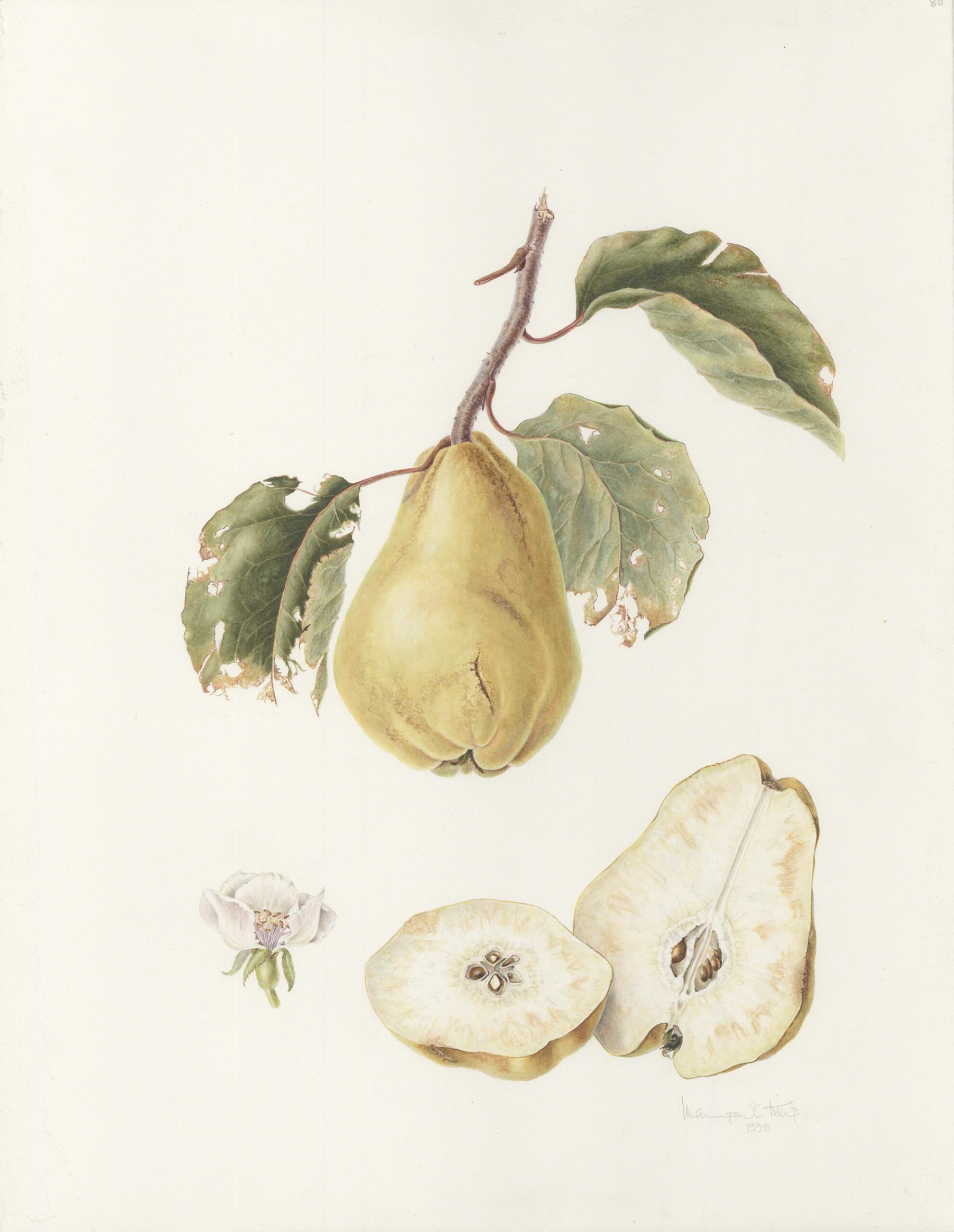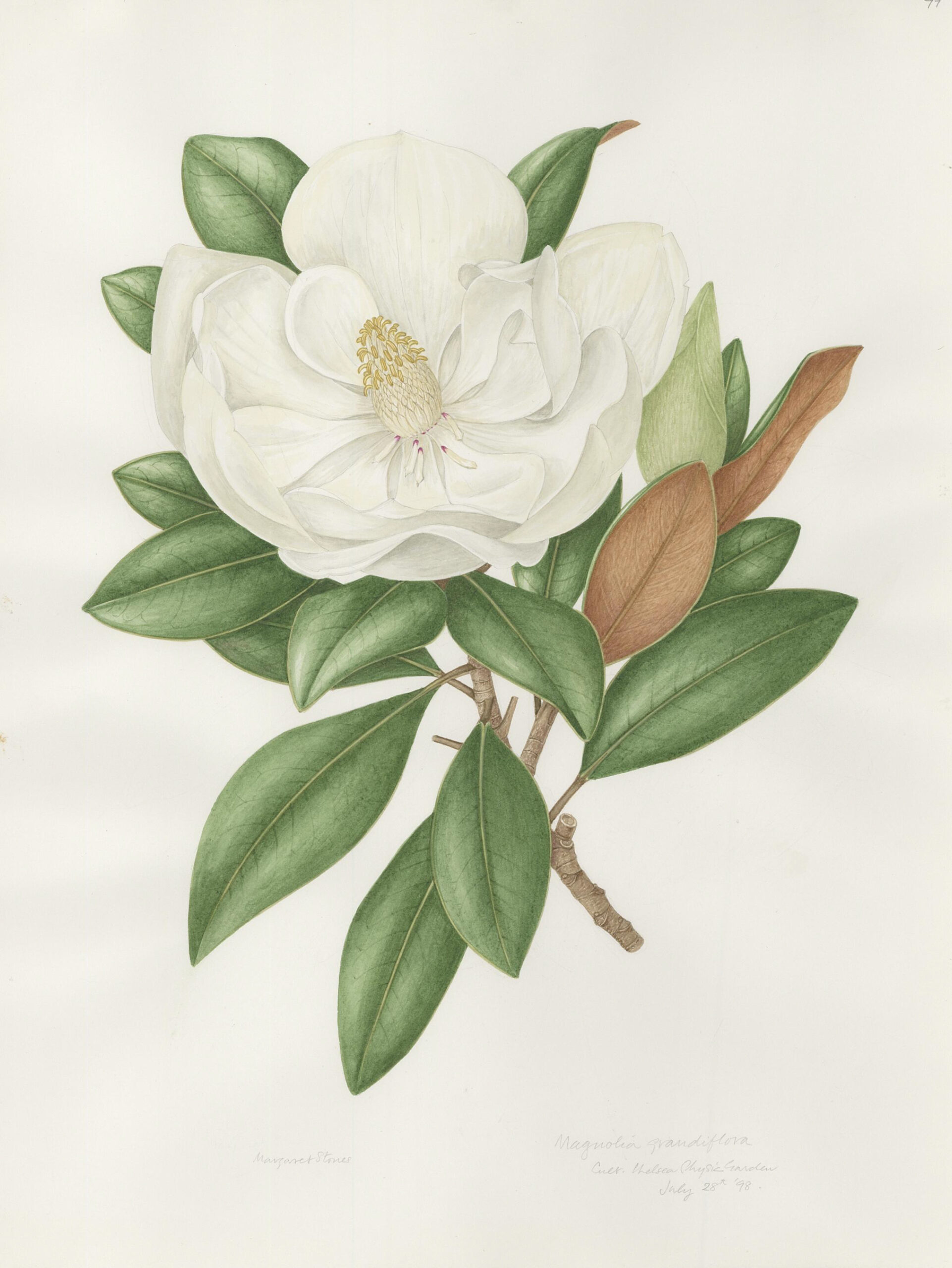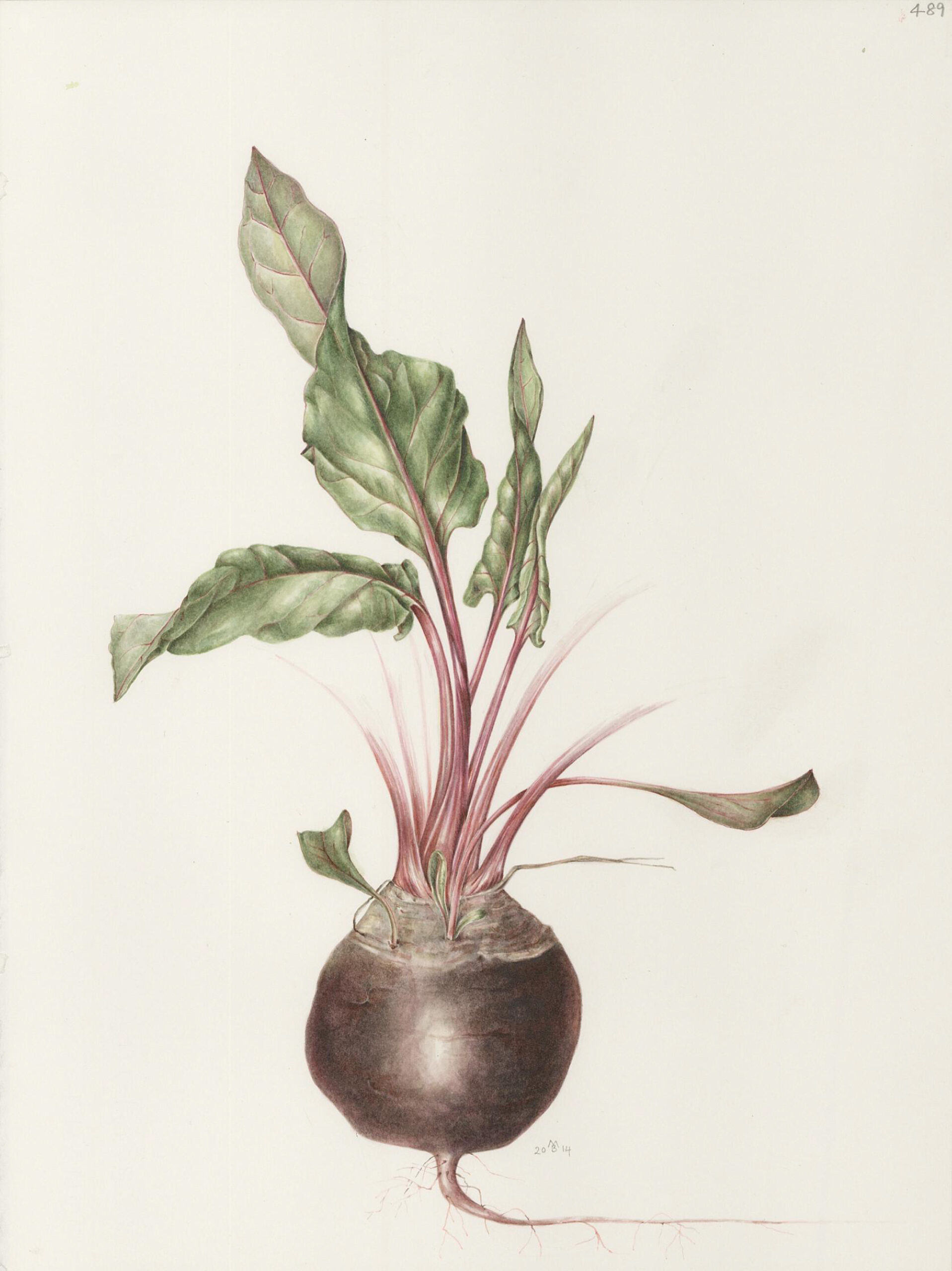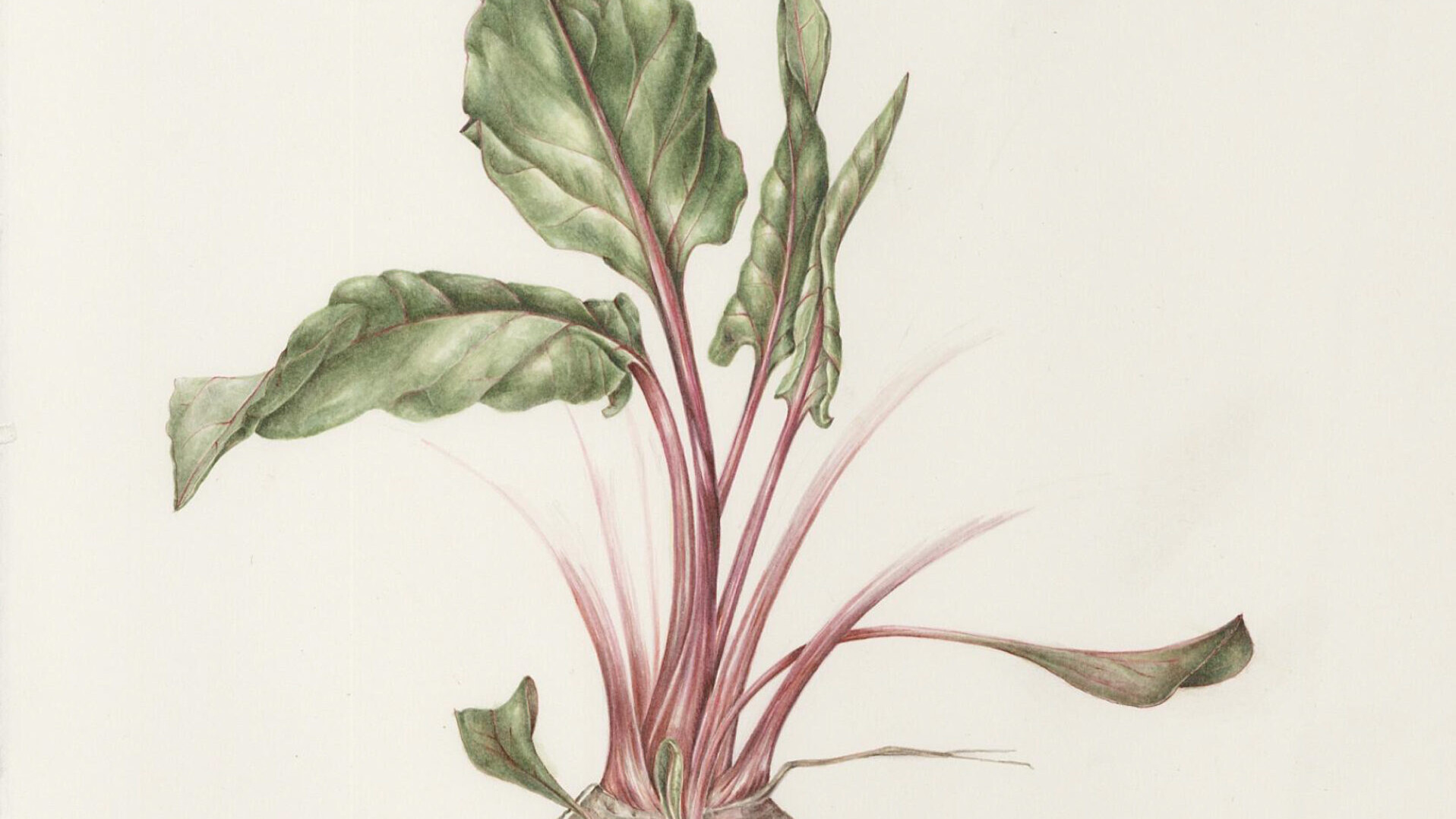Five local and seasonal fruits and vegetables to support your body this month
By Eve Barro, Assistant Project Curator at Chelsea Physic Garden
Every month, we will be labelling the plants mentioned in these blogs to bring our stories to life, so keep an eye out for the circular green labels during your next visit. A full list of these plants can be found at the end of the blog.
As winter approaches, days shorten and the temperature drops, comforting health-supporting meals are one of the best habits you can adopt to get your body through the season. For this month’s post, I investigated functional plant-based food and how ancient herbals and modern research suggest that they can support our health. Functional foods are foods which “provide more than simple nutrition” by having added benefits like reducing the risk of certain diseases (1). It does not mean that they can be used as a treatment but that adding them to your diet might help you remain healthy. Great news, there are lots of health-supporting fruits and vegetables grown in the UK that are ready to eat this month.
Elderberry (Sambucus nigra)
Sambucus nigra (elderberry) has been used in folk medicine for a very long time as a diuretic and antipyretic (fever suppressant) (2). In 400BC, the Greek physician Hippocrates already referred to the elder plant as his “medicine chest” because of the variety of treatments that could be derived from it (3).
Modern research suggests that elderberries might have antiviral, antibacterial, antitumour, antidepressant and hypoglycaemic properties. Specifically, it is believed that some of the medicinal properties of the plant could be linked to the presence of molecules called “phenolic compounds” which display a strong antioxidant activity (2). Oxidative stress causes cell and tissue damages and has been linked to the progression of several diseases including cardiovascular diseases, diabetes, metabolic disorders and atherosclerosis (4).
A very recent study also suggests that the molecules present within elderberries might have the ability to inhibit viral replication. They might also help recruit and activate cells important for the immune response (5). Consuming elderberries might thus not only help to prevent the progression of certain diseases but also help our body fight infection.
Elderberries can be used to make jams, cordial, flavoured gin or vinegar. They pair well with Citrus spp. fruits which counteract the tartness of the fruit.
Sweet chestnut (Castanea sativa)
In his herbal, 16th century English herbalist John Gerard wrote about the nutritional potential of sweet chestnuts: “Of all the acorns, saith Galen, the chestnuts are the chiefest, and do only of all the wild fruits yield to the body commendable nourishment” (6).
Sweet chestnuts contain a high content of fibre. It means that eating sweet chestnuts can stimulate a healthy intestinal microbiota and decrease sugar and fat absorption rates as well as regulate bowel transit. Sweet chestnuts are also rich in magnesium, potassium, phosphorus, selenium, ascorbic and folic acid and contain compounds which have antioxidant properties and can participate in protecting the body from cardiovascular diseases (7).
Sweet chestnuts can be consumed raw, boiled, roasted or as processed ingredients such as flour, puree and candied sweet chestnuts. When used in desserts, sweet chestnuts pair particularly well with Theobroma cacao (chocolate), Coffea arabica (coffee) and Vanilla planifolia (vanilla).
Quince (Cydonia oblonga)
Cydonia oblonga (quince) has been used in Iranian traditional medicine to relieve nausea and vomiting during pregnancy since ancient times. A property that also seems to be supported by modern research (8). More generally in Iranian traditional medicine, quince are used to relieve digestive problems, gastrointestinal inflammation, and bloating. (9). The use of quince for such problems is well established in European folk medicine too as Elizabeth Blackwell wrote in her famous 18th century herbal that the fruit of the quince tree is “strengthening to the stomach, helping digestion and stopping vomiting and the hiccoughs”.
According to modern research the fruit might also have antioxidant, anti-inflammatory, anticancer, anti-ulcerative and anti-microbial properties (10).
Quince can be used to make Dulce de Membrillo, a spanish quince pasteThey can also be preserved, used to make pies, jellies and roasted or poached. They pair well with spices such as Zingiber officinale (ginger) and Elettaria cardamomum (cardamom) both of which are often used in the sweetened pickling liquor of pickled quince.

Parsnip (Pastinaca sativa)
Parsnips are important in traditional Iranian medicine. In this healing tradition it is recommended to consume them as a gastric tonic, laxative, and to relieve inflammation. (11)
Parsnips contain a lot of fibre which is key to a healthy gut. Having a good fibre intake has been shown to help relieve conditions such as intestinal ulcers, gastroesophageal reflux disease and colon inflammation (11). Their fibre has also been shown to help regulate blood sugar and cholesterol levels.
Parsnips contain good levels of potassium, vitamin C and B6. Vitamin B6 is helpful to support the body’s immune system and brain health as well as normal metabolic processes while vitamin C plays an important role in wound healing and as an anti-inflammatory. Potassium is useful to maintain normal fluid levels around cells and blood pressure as well as to support muscle contraction (12).
Parsnips pair well with herbs such as Salvia officinalis (sage) and Thymus vulgaris (thyme). They can be used to prepare soup, roasted vegetables, and mash.
Magnolia grandiflora (evergreen magnolia) and Coleoptera spp. (beetle)
When Magnolias evolved on earth about 95 million years ago (cretaceous period), commonly known pollinators such as bees and butterflies had not evolved yet. Beetles are thought to have been one of the first insects to establish pollen-based relationships with plants and, consequentially, to act as pollinators for some flowering plants (10). The pollination of magnolias by beetles thus goes back millions of years. Beetles visit magnolia flowers mainly to feed on their protein rich pollen and are attracted by the aromatic oils emitted by the flowers (a subtle citrus scent). To support their pollinating activity, beetles can display specific features that facilitate pollen collection and transport such as a hairy body and a “brush-like” mandible (11). Magnolia flowers developed a mechanism that favours their cross pollination by beetles: they trap beetles inside the flowers at night, closing the stigma (female reproductive system) and letting the beetles be covered in fresh pollen by the anthers. In the morning, the flowers open so that beetles can fly off to a different flower that has a pollen receptive stigma and pollinate it (12).


Beetroot (Beta vulgaris)
In her herbal, 18th century botanical illustrator Elizabeth Blackwell writes “Beets are esteem’d good to loosen the Belly”. The plant has also been used in Iranian traditional medicine to treat constipation, joint and gut pain (13).
Beetroot is a good source of vitamin B and C as well as minerals. It also contains a lot of compounds with antioxidant properties. In fact, Beta vulgaris would have been “ranked among the most potent antioxidant vegetables“(14). Modern research has been focusing on the potential antimicrobial, anti-inflammatory and cardioprotective properties of the plant as well as its potential in aiding post workout recovery (15, 16, 17). Some in vitro research even suggests that consuming the plant might have some protective properties against specific types of cancers by inhibiting cell proliferation (14).
Beetroot can be consumed raw or cooked in salads and roasts. It pairs well with other earthy flavours such as Solanum tuberosum (potatoes) and can be nicely combined with fresh herbs like Anethum graveolens (dill).
*The content of this blog post is the result of research from historic texts and scientific literature and the author, who is not medically trained, has drawn conclusions based on those texts. It is not intended to be a substitute for professional medical advice and should not be relied upon for the treatment of any medical condition noted, it is for informational purpose only.
Find the plants mentioned in this post during your next visit of the Garden!
Plant 1: Anethum graveolens (dill)
Plant 2: Theobroma cacao (cocoa)
Plant 3: Castanea sativa (chestnut)
Plant 4: Citrus spp.
Plant 5: Citrus × aurantium Grapefruit Group (grapefruit)
Plant 6: Cydonia oblonga (quince)
Plant 7: Elettaria cardamomum (cardamom)
Plant 8: Pastinaca sativa (parsnip)
Plant 9: Salvia officinalis (sage)
Plant 10: Sambucus nigra (elder)
Plant 11: Solanum tuberosum (potato)
Plant 12: Thymus vulgaris (thyme)
Plant 13: Vanilla planifolia (vanilla)
Plant 14: Zingiber officinale (ginger)
To know more
Raven, S., & Buckley, J. (2007). Sarah Raven’s garden cookbook. Bloomsbury.
Jones, A. (2021). One pot, pan, planet: A greener way to cook for you, your family and the planet. 4th Estate.
References
- Jones, P. (2002). Functional foods—More than just nutrition. CMAJ.
- Młynarczyk, K., Walkowiak-Tomczak, D., & Łysiak, G. P. (2018). Bioactive properties of Sambucus nigra L. as a functional ingredient for food and pharmaceutical industry. Journal of Functional Foods, 40, 377–390. https://doi.org/10.1016/j.jff.2017.11.025
- Miller, A. (2021, November 17). Plant of the month: Elderberry. JSTOR Daily. https://daily.jstor.org/plant-of-the-month-elderberry/
- Pizzino, G., Irrera, N., Cucinotta, M., Pallio, G., Mannino, F., Arcoraci, V., Squadrito, F., Altavilla, D., & Bitto, A. (2017). Oxidative stress: Harms and benefits for human health. Oxidative Medicine and Cellular Longevity, 2017, 1–13. https://doi.org/10.1155/2017/8416763
- Setz, C., Fröba, M., Große, M., Rauch, P., Auth, J., Steinkasserer, A., Plattner, S., & Schubert, U. (2023). European black elderberry fruit extract inhibits replication of sars-cov-2 in vitro. Nutraceuticals, 3(1), 91–106. https://doi.org/10.3390/nutraceuticals3010007
- Gerard, J. (2015). The herbal or general history of plants: The complete 1633 edition as revised and enlarged by Thomas Johnson (T. Johnson, Ed.). Calla Editions.
- Santos, M. V., Banfi, S., Santos, R., Mota, M., Raymundo, A., & Prista, C. (2023). Improving chestnut physicochemical properties through fermentation – Development of chestnut Amazake. Food Chemistry: X, 17, 100597. https://doi.org/10.1016/j.fochx.2023.100597
- Jafari-Dehkordi, E., Hashem-Dabaghian, F., Aliasl, F., Aliasl, J., Taghavi-Shirazi, M., Sadeghpour, O., Sohrabvand, F., Minaei, B., & Ghods, R. (2017). Comparison of quince with vitamin B6 for treatment of nausea and vomiting in pregnancy: A randomised clinical trial. Journal of Obstetrics and Gynaecology, 37(8), 1048–1052. https://doi.org/10.1080/01443615.2017.1322046
- Larijani, B., Esfahani, M. M., Moghimi, M., Shams Ardakani, M. R., Keshavarz, M., Kordafshari, G., Nazem, E., Hasani Ranjbar, S., Mohammadi Kenari, H., & Zargaran, A. (2016). Prevention and treatment of flatulence from a traditional persian medicine perspective. Iranian Red Crescent Medical Journal, 18(4). https://doi.org/10.5812/ircmj.23664
- Al-Zughbi, I., & Krayem, M. (2022). Quince fruit Cydonia oblonga Mill nutritional composition, antioxidative properties, health benefits and consumers preferences towards some industrial quince products: A review. Food Chemistry, 393, 133362. https://doi.org/10.1016/j.foodchem.2022.133362
- Kenari, H. M., Kordafshari, G., Moghimi, M., Eghbalian, F., & TaherKhani, D. (2021b). Review of pharmacological properties and chemical constituents of pastinaca sativa. Journal of Pharmacopuncture, 24(1), 14–23. https://doi.org/10.3831/KPI.2021.24.1.14
- Harvard Chan School. (2019, June 3). Potassium. The Nutrition Source. https://www.hsph.harvard.edu/nutritionsource/potassium/
- Hamedi, S., & Honarvar, M. (2019). Beta vulgaris—A mini review of traditional uses in iran, phytochemistry and pharmacology. Current Drug Discovery Technologies, 16(1), 74–81. https://doi.org/10.2174/1570163815666180308142912
- Babarykin, D., Smirnova, G., Pundinsh, I., Vasiljeva, S., Krumina, G., & Agejchenko, V. (2019). Red beet (Beta vulgaris) impact on human health. Journal of Biosciences and Medicines, 7(3), 61–79. https://doi.org/10.4236/jbm.2019.73007
- Chen, L., Zhu, Y., Hu, Z., Wu, S., & Jin, C. (2021). Beetroot as a functional food with huge health benefits: Antioxidant, antitumor, physical function, and chronic metabolomics activity. Food Science & Nutrition, 9(11), 6406–6420. https://doi.org/10.1002/fsn3.2577
- Punia Bangar, S., Sharma, N., Sanwal, N., Lorenzo, J. M., & Sahu, J. K. (2022). Bioactive potential of beetroot (Beta vulgaris). Food Research International (Ottawa, Ont.), 158, 111556. https://doi.org/10.1016/j.foodres.2022.111556
- dos S. Baião, D., da Silva, D. V. T., & Paschoalin, V. M. F. (2020). Beetroot, a remarkable vegetable: Its nitrate and phytochemical contents can be adjusted in novel formulations to benefit health and support cardiovascular disease therapies. Antioxidants, 9(10), 960. https://doi.org/10.3390/antiox9100960

